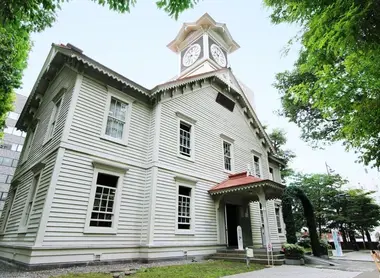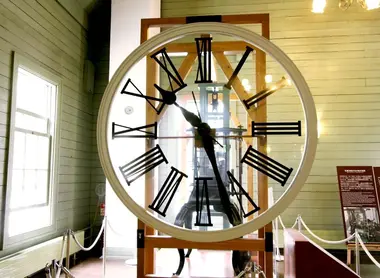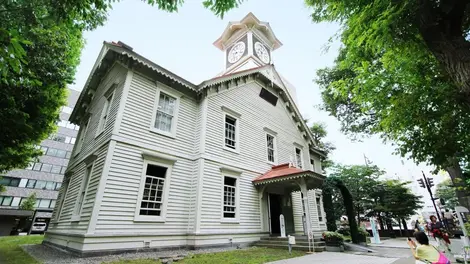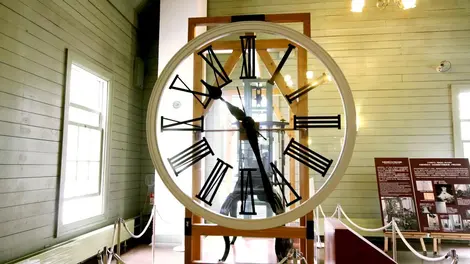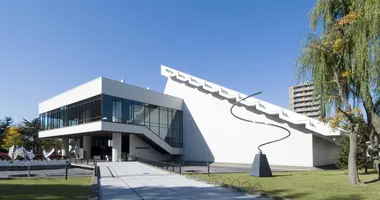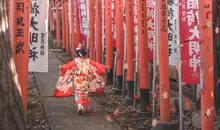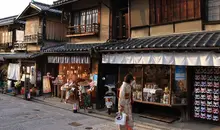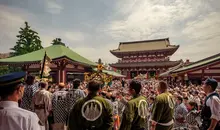The Sapporo Clock Tower: history and a visit to a symbol of the city
- Published on : 22/01/2015
- by : G.L.
- Youtube
Colonial Carillon
The Sapporo Clock Tower (札幌時計台, Sapporo tokeidai) represents one of the city's most iconic symbols. Built in 1878 in an American architectural style, this wooden structure bears witness to the Western influence on Hokkaido's development during the Meiji era. Originally designed as a military training hall for the Sapporo Agricultural College (now the University of Hokkaido), it has spanned almost 150 years of history, changing function several times. Its distinctive carillon, which has never stopped ringing since its installation in 1881, continues to mark the hours for the city's inhabitants and visitors alike.
History and origins of the clock tower
The Sapporo Clock Tower was designed by William Wheeler at the request of the Japanese Colonization Commission in 1878. The project was part of the Japanese government's drive to colonize and modernize the island of Hokkaido. The architect completed the plans in January, and construction took place from March to October of the same year.
The building was originally intended as a military training hall for students of the Sapporo Agricultural College, an institution founded to provide American-influenced training for pioneers newly settled on the island of Hokkaido. This college later became the University of Hokkaido. In 1879, theclock itself, built by the Howard Clock Company of Boston, was delivered. Its imposing size necessitated major adaptation work to incorporate it into the building.
One of the highlights of the building's history was the visit of Emperor Meiji in 1881, who came to see the newly-developed city and its symbolic tower. In 1906, the entire building was moved some 487 meters southwards from its original location, reflecting the urbanistic evolutions of the growing city.
Architecture and building features
The Clock Tower is distinguished by its American-style architecture, in stark contrast to the traditional Japanese buildings of the time. Its wooden structure almost makes you think you're in New Orleans rather than Japan. The single-storey building is built in a T-shape, using a cross-frame construction technique known as"balloon frame", which originated in the USA.
This technique was combined with local know-how for the load-bearing structure, creating a unique architectural synthesis. The first floor comprises an entrance hall, a staircase and four rooms originally used for teaching. The upper floor houses a small armory and a large room formerly dedicated to student military exercises.
The exterior walls are clad with horizontal wooden planks, and the main facade features a characteristic wide triangular gable. It is on this gable that the clock that gives the building its name is mounted. The building's white walls blend harmoniously with the surrounding landscape, creating a striking contrast depending on the season and during night-time illuminations.
The clock's unique mechanism
The clock atop the tower is a true technical masterpiece for its time. Commissioned and purchased from the E. Howard Watch & Clock Company of Boston, the clock was installed in 1881 and features a particularly ingenious mechanism that continues to operate more than 140 years after its commissioning.
The great originality of this mechanism is that it operates solely on the force of gravity. Two weights suspended from the bottom of the clock activate the gears and turn the hands. These weights are actually wooden boxes filled with small stones: one weighing 50 kilos for the clock's regular movement (the "tick-tock"), and the other weighing 150 kilos to activate the mechanism that rings the bell.
Before the weight reaches the ground, which happens every four days or so, it has to be wound up by hand using a crank. This simple yet robust system explains the clock's exceptional longevity and regular operation. According to local legend, its chimes have never stopped ringing since it was installed in 1881, not even for a single hour.
A popular myth has it that when the tower was being built, Japanese women gave their rings to cast the carillon, giving it its characteristic "sweet sound". Although this story is probably more folklore than historical fact, it bears witness to the attachment of the local population to this symbol of their city's sound, to the extent that the tower was included in the 1996 list of Japan's 100 natural sounds.
Changes and uses over time
Over the decades, the clock tower has undergone several changes of use, reflecting the evolution of Japanese society. After serving as a military training hall for the agricultural college, it was temporarily transformed into a post office in 1907, then into a library from 1911 to 1918.
During the Second World War, it once again served a military function as a training center. After the war, the building was out of use for several years, before undergoing major restoration work in 1967 and 1976. It was at the latter date that a museum was officially installed.
Between 1995 and 1998, major renovation work was carried out, including seismic reinforcement to ensure the longevity of this historic building. These preservation efforts have been crowned by several official recognitions: the tower has been classified as an important cultural asset since 1970, and was listed as a mechanical engineering heritage site in 2009.
Despite these changes in use, the tower has always retained its primary function as a timekeeper for the people of Sapporo, its chimes faithfully marking the hours for over a century.
The clock tower as a cultural symbol of Sapporo
Beyond its historical and architectural value, the clock tower has become a true cultural symbol forSapporo and its inhabitants. Its importance is such that the city's citizens' charter, signed in 1963, begins with the words: "We, the citizens of Sapporo, where the chimes of the clock tower can be heard..."
This modest tower, which has neither the imposing size nor the luxury of a palace, is nevertheless deeply rooted in local identity. Its carillon, whose distinctive "dong! dong!" rings out every hour, is described as a sound "that thrills and resonates to the heart" of the locals. As Japan modernized, many Western-style clock towers were built across the country, but wars and earthquakes reduced their number, making Sapporo's the oldest surviving one.
The tower also appears in numerous cultural works. Various novels and films mention it or feature it, notably by writers Takeo Arishima, Tama Morita or Hakushū Kitahara. It has become a key element in the representation of Sapporo in the Japanese collective imagination.
For tourists, the clock tower is now one of Sapporo's most popular attractions, a landmark that tells the story of the city's earliest days. Its white walls, which blend harmoniously with the changing seasonal landscape, make it an ideal location for photography.
Visit the museum and exhibitions
Today, the clock tower houses a museum dedicated to its own history and that of Sapporo's development. On the first floor, visitors will discover a permanent exhibition tracing the history of the building, as well as the achievements of the young graduates and teachers of the former Sapporo Agricultural College.
The exhibition includes historical documents, period photographs, models showing the evolution of the building and its urban environment, and explanatory videos. Artifacts relating to the history of the colonization of Hokkaido and the region's agricultural development under American influence are also on display.
The second floor, which used to be a military training hall, is now a vast multi-purpose space that regularly hosts temporary exhibitions, concerts and other cultural events. It can also be hired by private individuals for a variety of events.
A visit to the museum provides an insight into the historical and symbolic importance of this building in the development of Sapporo. Although some foreign visitors may find that the explanations are mainly in Japanese, the atmosphere and architecture of the place are well worth a visit, especially at the time of the hour change to hear the famous carillon ring out.
Practical information for visitors
If you're planning to visit the Clock Tower during your stay in Sapporo, here's some practical information you might find useful:
Address: Nishi 2 chome, Kita 1 jo, Chuo-ku, Sapporo-shi (North 1 - West 2, Chūō-ku)
Access: The tower is easily accessible from all major points in the city: - 10-minute walk from the south exit of Sapporo station on the Tokeidai dôri - 5-minute walk from Odori subway station (exit 7) on the Namboku, Tozai and Toho lines
Opening hours: Open every day except Monday, from 8:45 a.m. to 5:00 p.m
Admission: - Adults: ¥200 - Children: free
Contact: For further information, please call the museum on +81 (0)11 231 0838
Website: http: //www15.ocn.ne.jp/~tokeidai/english/index.html
To make the most of your visit, try to plan your arrival on time to hear the famous chimes ringing. Although the clock tower isn't the most spectacular sight in Sapporo, it is an important historical landmark that's well worth a visit to understand the city's origins.
Don't confuse the Clock Tower with two of Sapporo's other famous towers: the Television Tower (located at the end of Odori Park, recognizable by its style reminiscent of the Eiffel Tower) and the JR Tower (in front of the railway station), both of which offer excellent panoramic views of the city and its surroundings.
Address, timetable & access
Address
Phone
+81 (0)11 231 0838Timetable
Open every day except Monday, 8.45 a.m.-5 p.mPrice
Adults 200 円
free for childrenAccess
10-minute walk from station via Tokeidai dôrià
5-minute walk from Odori subway station (exit 7)Website
http://www15.ocn.ne.jp/~tokeidai/english/index.html
